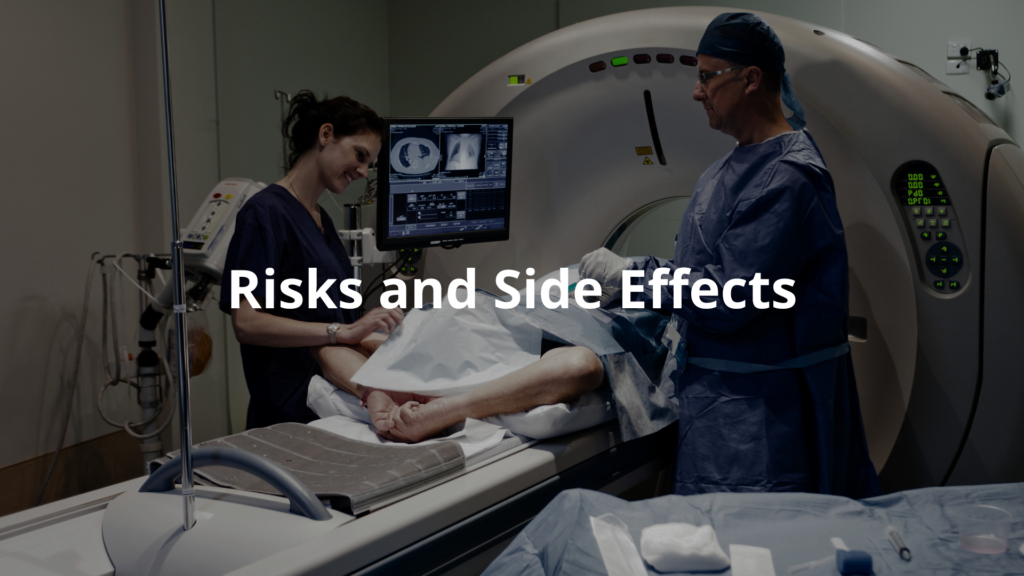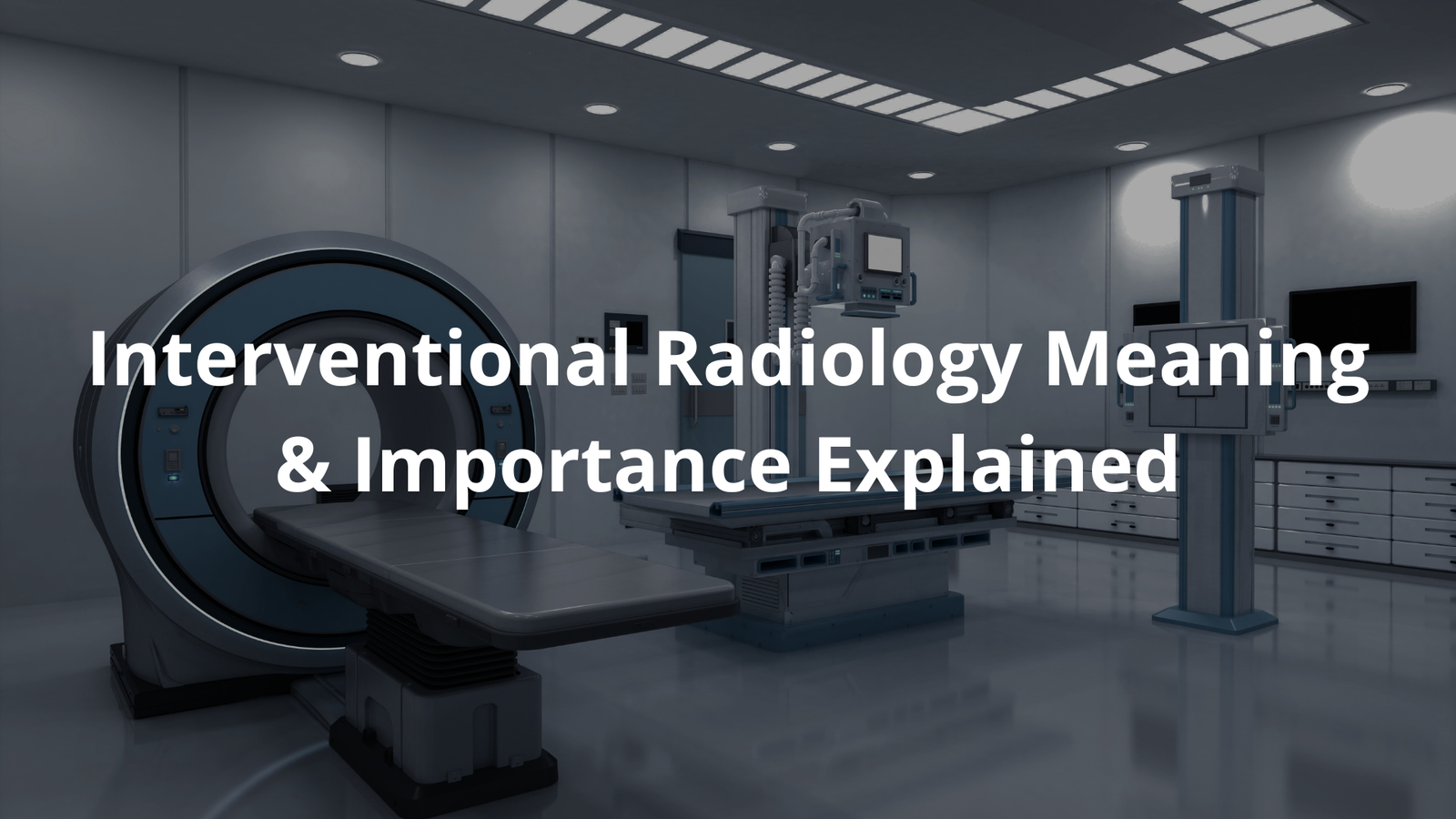Understand interventional radiology’s role in treating health problems for quicker patient recovery.
Interventional radiology is a fascinating area of medicine that brings hope to patients facing tough times. Imagine a patient stepping into a hospital, heart racing, and hoping for some relief from the pain. Instead of undergoing a big surgery with long recovery, skilled doctors use advanced machines—like CT scans and ultrasounds—to see right inside the body.
They can fix blood vessels or target cancers with tiny cuts that hurt less, helping people return to their daily lives quicker. Isn’t that incredible? If you’re keen to discover more about how this innovative field works and its importance, stick around!
Key Takeaway
- Interventional radiology uses imaging tests to guide procedures.
- It helps treat various conditions with less pain and shorter recovery times.
- Patients can enjoy better quality of life through these methods.
What is Interventional Radiology?
Interventional radiology, or IR for short, is a special part of medicine. It’s all about using pictures from fancy machines to help doctors treat patients. Instead of doing big, complicated surgeries, doctors use small tubes known as catheters to reach problem areas in the body.
For instance, if someone has liver cancer, a doctor might thread a tiny tube to inject treatment right where it’s needed. Or think about kidney stones; with IR, doctors can get rid of those painful stones without making big cuts. Sounds tricky, but these procedures are actually made to be pretty gentle.
Picture a pencil-sized tube sliding through a tiny hole in the skin. That’s how doctors get to blood vessels or organs. Isn’t it amazing how technology helps heal people without having to do huge surgeries?
How Does It Work?
The beauty of interventional radiology comes from using imaging techniques to help doctors do their work just right. They count on advanced tools like CT scans, which take super clear pictures of what’s happening inside the body. Ultrasounds, using sound waves, help show how organs look and move.
How Does It Work?
- Imaging for Guidance: CT scans and ultrasounds give clear pictures to help navigate inside the body.
- Sedation and Comfort: Patients get medicine to help them relax during the procedure.
- Catheter Insertion: A small catheter is put into a blood vessel, usually through the arm or leg, and carefully guided to the problem area.
- Minimally Invasive Treatments: Doctors might inject medication into a tumor to shrink it or put in stents to keep blood vessels open.
- Quick Recovery: Most procedures happen in hospitals, and many patients go home the same day.
Interventional radiology is a safer, easier way to treat various health problems, helping patients bounce back faster.
What Can Interventional Radiology Treat?
Interventional radiology can help with lots of health issues. Here are some common treatments done by doctors:
- Cancer Treatments: IR techniques help target cancer cells. For instance, doctors can use tumor ablation or chemoembolization to treat cancers in the liver or prostate.
- Blood Clots: When blood clots form, they can block flow and be dangerous. Doctors use IR to dissolve these clots, helping prevent more problems.
- Kidney Stones: Those who struggle with painful kidney stones can find relief through IR, which safely removes the stones with little pain.
- Vascular Issues: Many folks have trouble with their blood vessels, such as aneurysms or varicose veins. Interventional radiology offers effective treatments, so patients often don’t need bigger surgeries.
These quick procedures mean people spend less time in the hospital and get back to their lives sooner, a big plus when health matters!
Why is Interventional Radiology Important?
Interventional radiology is very important for a few reasons. First of all, it lets doctors do minimally invasive procedures. That means less pain and faster recovery. Many patients can head home just a few hours after their treatment instead of staying in a hospital bed for days.
Secondly, IR makes it easier for doctors to diagnose and treat problems at the same time. Patients don’t have to go through lots of tests before starting treatment. This saves time and can make life better for patients, helping them return to their activities much quicker.
IR isn’t just about being high-tech; it’s also about caring for people. Doctors understand patients can feel scared and worried. By reducing the need for large surgeries, they can help lessen some of those fears.
Training for Interventional Radiologists
Becoming an interventional radiologist takes time and a lot of training. First, doctors need to complete medical school, which takes several years. Next, they need special training in radiology, learning to understand imaging tests and the human body.
After that, they undergo a fellowship in interventional radiology. This specialized stuff focuses on the techniques needed to perform IR safely. In Australia, the Royal Australian and New Zealand College of Radiologists (RANZCR) oversees this training.
This system ensures that interventional radiologists are highly qualified and skilled. They know the latest techniques and tools, which helps keep patients safe and healthy. [1]
Patient Experience in Interventional Radiology
When someone is sent for interventional radiology, it usually starts with a referral from their regular doctor. Hospital staff will explain the procedure and answer any questions. Patients should bring important papers like referral letters and a list of medications to their appointment. [2]
During the Procedure
- Close Monitoring: Patients are closely watched throughout the procedure.
- Supportive Care: The medical team is there to offer assurance and support.
- Minimal Discomfort: Though some patients may feel nervous, most feel very little discomfort.
Recovery and Return Home
- Short Stay: After the procedure, patients spend time recovering but often can return home the same day.
- Quick Return to Daily Life: Patients often love how fast they can get back to doing normal things after interventional radiology.
This form of treatment enhances people’s lives by offering easier procedures and faster recoveries.
Risks and Side Effects

Like all medical treatments, interventional radiology has some risks. Most patients do well, but there can be occasional side effects. Common risks include minor bleeding or infections, though these are rare. Doctors take many precautions to keep these risks low while putting patient safety first.
Importance of Patient Communication
- Discuss Concerns: It’s best for patients to talk openly with their doctors about any worries before the procedure.
- Understand Expectations: Knowing what’s going to happen helps lower anxiety and makes patients feel more in control.
- Ask Questions: Patients should feel free to ask any questions to ensure they understand everything about the process.
Interventional radiology keeps patient safety a top priority while providing effective, minimally invasive treatments for many health problems.
FAQ
What is interventional radiology and how does doctors use pictures to guide them?
Think of it like using a special camera during medical procedures. Doctors use ct scan and real time pictures (called image guidance) to see inside your body. Instead of making big cuts like in open surgery, they use tiny tubes called small catheter to fix problems through small holes.
How do doctors use special cameras to fix blood vessel problems?
They use special X-rays called computed tomography and ct angiography to see all your arteries and veins in your circulatory system clearly. This helps them fix blood flow problems and remove blood clots that block blood supply to different parts of your body.
What kinds of health problems can these special procedures fix?
These ir procedures can help with lots of things! They fix swollen veins (called varicose veins), problems in your neck’s main blood vessel (carotid artery), growths in the womb (uterine fibroids), and can even destroy cancer cells. They also fix blocked bile ducts. The imaging guidance helps doctors work very carefully.
Why are these procedures better than regular surgery?
These special procedures mean shorter hospital stays and recovery times than regular open surgery. Since doctors make tiny holes and use image guided tools, you’ll have less pain after the procedure and a faster recovery time. This helps you get back to feeling better sooner!
How does this type of treatment help people with cancer?
Doctors use special radiation therapy and nuclear medicine to treat cancer. They use radio waves and special cameras to find and treat tumours exactly where they are. They also help put in special tubes (central venous and venous access) that make it easier to give cancer treatment.
What happens when doctors need to fix the big vein in your belly (inferior vena cava)?
When working on the vena cava, doctors use real-time pictures to guide a tiny tube through your blood vessels. They might give medicine for clot dissolving or put in a tiny support tube (stent placement) to keep the vein open and stop the risk of rupture.
What kind of special training do these doctors get?
They go through a special clinical radiology training program. In places like Australia and North America, they get certified by groups like the american board to make sure they’re experts in clinical oncology and can safely treat a range of conditions.
How do doctors fix problems with blood vessels?
Using special cameras for medical imaging, doctors can do things like artery embolisation to fix troubled blood vessels or restore blood flow. When treating nerve root problems or issues with the prostate artery, they use very precise tools to fix the problem without big cuts.
Conclusion
Interventional radiology’s a pretty interesting field that helps doctors tackle a bunch of health problems with less pain and quicker recoveries. Using advanced imaging tech, they can treat issues without massive surgeries. More folks are getting to know this approach, so I reckon it’ll keep growing and making patients’ lives better in hospitals all over Australia. So, next time you hear about it, think about how it helps people live healthier and happier!
References
- https://irsa.com.au/what-is-interventional-radiology/
- https://www.northernimagingvictoria.org.au/for-patients/interventional-radiology/




